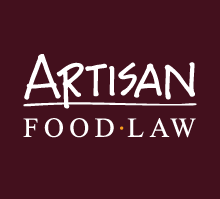The labelling of ‘gluten-free’ foods
Foods claiming to be either ‘gluten free’ or ‘very low gluten’ are governed by new compositional and labelling standards set out in Commission Regulation (EC) No. 41/2009 and covered in The Foodstuffs Suitable for People Intolerant to Gluten (England) Regulations 2010, with parallel provision for Scotland, Wales and Northern Ireland, that came into effect on 1 January 2012 and covers all foods whether pre-packed, sold loose or offered on a restaurant menu.
A ‘gluten-free’ food may contain no more than 20 parts per million of gluten.
A ‘very low gluten’ food may contain no more than 100 parts per million of gluten but only foods with cereal ingredients that have been specially processed to remove gluten may make a ‘very low gluten’ claim.
If food does not comply with these requirements it cannot be described as ‘gluten-free’ or ‘very low gluten’ but factual statements may be made such as, where it is the case, ‘no gluten-containing ingredients’, but care must be taken to manage possible cross-contamination from foods that contain gluten. The phrase ‘suitable for coeliacs’ can only be used in conjunction with the terms ‘gluten-free’ or ‘very low gluten’ and not on its own.
Roughly 1 in a 100 people suffer from gluten intolerance (coeliac disease) and so must avoid eating foods that contain gluten, a protein found in cereals such as wheat, rye and barley, which can damage the lining of the small intestine and prevent the absorption of nutrients in those who suffer from the condition. Research has shown that sufferers may safely eat low levels of gluten at no more than 20 parts per million.
Gluten may be present as an ingredient or by accidental cross-contamination as a result of a food coming into contact with ingredients containing gluten used in the same premises. The new standards will improve the quality of information available to people who suffer from gluten intolerance in reaching a decision whether to purchase a food.
The Food Standards Agency has published guidance for caterers and consumers, including a useful decision-making chart for caterers, on the application of the Regulation, click here for details.





